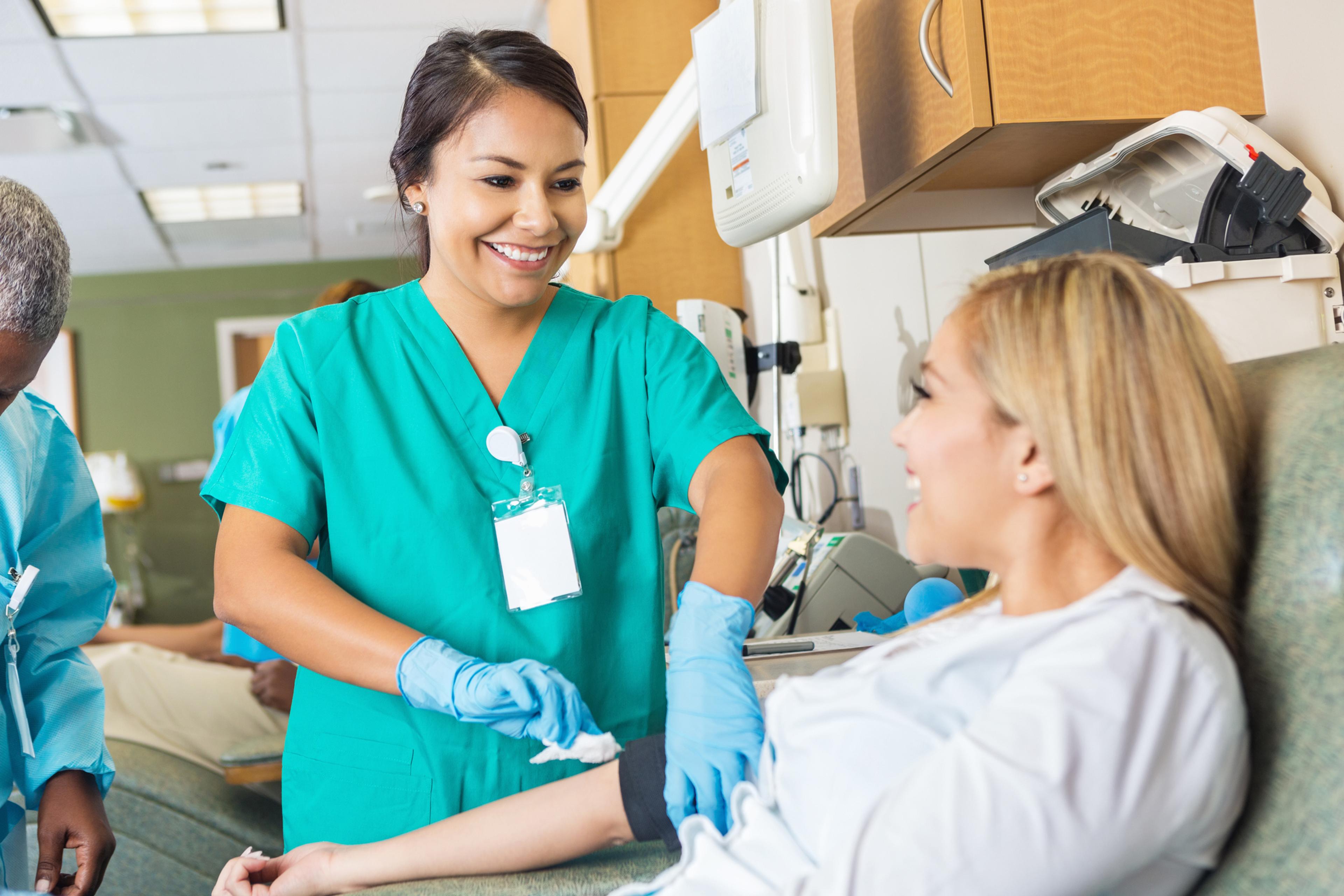Red Cross Faces Emergency Blood Shortage
Amy Barczy
| 4 min read
Amy Barczy is a former brand journalist who authored...

The American Red Cross is facing an emergency blood shortage this January. In a call for donors, the organization said it’s facing the lowest number of people donating blood in the past 20 years.
In the past two decades, the number of donors has dropped by 40%. The Red Cross attributes this change partly to some of the societal shifts in communities – as more people are working from home and attending school virtually. This means they are less likely to encounter a blood drive at their workplace or at school.
The winter weather, holiday break and seasonal illnesses also disrupt the amount of blood donations the Red Cross receives during this time of year. From Christmas to New Year’s Day, there was a shortfall of nearly 7,000 units of blood, according to the Red Cross. This can impact the availability of blood products for people in dire need of emergency transfusions.
“One of the most distressing situations for a doctor is to have a hospital full of patients and an empty refrigerator without any blood products,” said Dr. Pampee Young, chief medical officer of the Red Cross, in a statement. “A person needs lifesaving blood every two seconds in our country — and its availability can be the difference between life and death, however, blood is only available thanks to the generosity of those who roll up a sleeve to donate.”
Kalamazoo donor saves hundreds of lives
One of those dedicated donors is Amy Jo Kilmartin, 64, of Kalamazoo. When asked why she donates blood to the American Red Cross, she humbly says it’s just a part of her routine every two months to find the nearest blood drive.
But that routine has helped save lives.
Kilmartin recently celebrated her 125th blood donation with the American Red Cross in December 2023 – a feat that took 10 years to accomplish.

“For me personally, it’s very easy to do,” Kilmartin said. “It literally takes five minutes to fill up one of the bags they put the blood in. For me it’s really easy, and that’s kind of why I do it.”
Just one blood donation – about one pint of blood – can save a life. There’s a bigger significance to donating blood that keeps Kilmartin coming back as a regular donor.
“I like the idea that it helps a random person,” Kilmartin said of donating blood. “I like the idea that I’ve put something out there that can help someone.”
Kilmartin started donating blood in high school, when her mom volunteered at the blood drives as a registered nurse. Now, 45 years later, she hasn’t stopped giving – and has a box of commemorative pins marking the countless gallons of blood she has contributed over the years.
“What drives me is there’s always a blood shortage. They always need blood – that doesn’t change,” Kilmartin said. “I’m always trying to encourage younger people: get in there and give. I’m old, and I’m not going to do this forever.”
Expanded blood donor eligibility
Donating blood takes less than an hour, yet only 3% of the eligible donor population gives each year.
In 2023, the U.S. Food and Drug Administration expanded blood donation guidelines to allow more gay and bisexual individuals to donate blood. These new guidelines open the door for most gay men in monogamous relationships to become blood donors. Previously, there were specific screening questions and time-based deferrals just for gay men: men were asked to abstain from having sex with another man for three months before donating blood.
The new guidelines use a set of individual, risk-based questions to screen donors, regardless of sexual orientation, sex or gender. The questions are intended to screen for risk of transfusion-transmitted HIV. These guidelines align with scientific evidence and are similar to international policies, including Canada and the U.K.
Learn more about blood donor eligibility here: How Often Can I Donate Blood? (mibluesperspectives.com)
How to help
For Kilmartin, it’s impossible for her to calculate how much blood – and how many people she’s helped – over the years. In addition to her 125 donations with the American Red Cross, she previously donated blood with a different organization when she was living in Grand Rapids for many years.
Kilmartin stays consistent with donating blood by setting a reminder on her phone on when she’s eligible to donate blood again. And the American Red Cross app allows her to quickly scan blood mobile locations and to easily make an appointment where and when it’s convenient for her.
Before donating blood, Kilmartin says she eats a good spinach salad and makes sure she’s hydrated. After donating, she makes sure to get a small snack and bottle of water to help her body recover. And for the next several days, she drinks extra water and avoids heavy lifting.
“The people who work at these blood mobiles are terrific – they watch out for you, ask you, ‘Are you alright? Are you OK?,’” Kilmartin said of the nursing staff. “They really know their stuff and are watching out for us.”
Learn more about donating blood through the American Red Cross by using the Red Cross Blood Donor App, visiting RedCrossBlood.org or calling 1-800-RED CROSS (1-800-733-2767).





